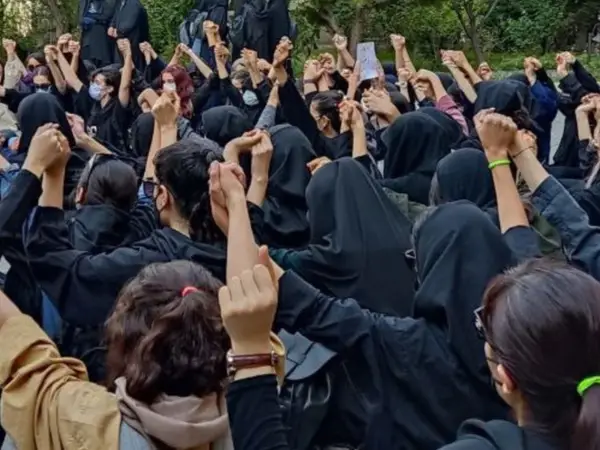Several students at Tehran’s College of Arts protesting stricter hijab rules were seriously injured in the early hours of Thursday by the head of campus security.
According to the popular Telegram channel of the National Student Unions Council, at about 2:30 am Thursday, Hamzeh Borzouei attacked a group of about fifty students who had begun a sit-in protest against new, stricter hijab rules and seriously injured several.
The Telegram channel said university authorities have still not allowed the students who began their sit-in on Wednesday afternoon to leave, and campus security has prevented anyone from bringing food or water to the students.
Students said on social media that Borzouei and other university officials made various threats against them including the threat of calling in the military to deal with them. Plainclothesmen and other security forces were already present in and outside the university in quite big numbers.
Students also said that security claimed they blocked food delivery to prevent poisoning that they could later be blamed for if students fell ill. Students also said the besieged protesters were not allowed to use the toilettes.
The new rules require girls to wear a pullover headscarf with stitched front (called maghna’e in Iran) which is like a nun’s coif, completely covering the head and the neck. Failing to comply, the university has announced, would result in suspension.
In the early 1980s wearing maghna’e became compulsory in all universities, government offices and even banks but its use gradually became obsolete in some more lenient establishments including the College of Arts.
The hijab required in the Islamic Republic consists of a long and loose tunic in muted colors worn over trousers with a similarly plain headscarf that covers all hair and shoulders. Authorities including Supreme Leader Ali Khamenei say wearing a long black veil (chador in Persian) that covers from head to toe is the ‘optimal hijab’.
In the past few years, the anti-compulsory hijab movement which took root with a social media campaign organized by US women’s rights activist Masih Alinejad in 2017, called White Wednesdays, has hugely grown. The movement has gained greater momentum since the death in custody of the 22-year-old Mahsa Amini in September 2022 and the protests that her death sparked.
Defiance of hijab has now turned into a form of civil disobedience. Many women who have been in a tug of war with the authorities for years are now adamant to be hijab free in public. They can be seen defiantly rejecting the head scarf everywhere, from restaurants to banks and parks where previously, they could not even enter without covering their head.
In recent months, authorities have increased pressure on students for hijab, presumably to stop the growth of the anti-compulsory hijab movement in universities across the country.
The National Student Unions Council said in April that 435 students had been suspended or expelled in universities nationwide, where they had staged many protests and sit-ins since the beginning of the Mahsa movement last year.
In recent months some political parties and dissidents in Iran, including the reformist Etehad-e Mellat Party and Zahra Rahnavard who has been under house arrest together with her husband Mir-Hossein Mousavi for thirteen years have demanded the abolition of the compulsory hijab laws.
